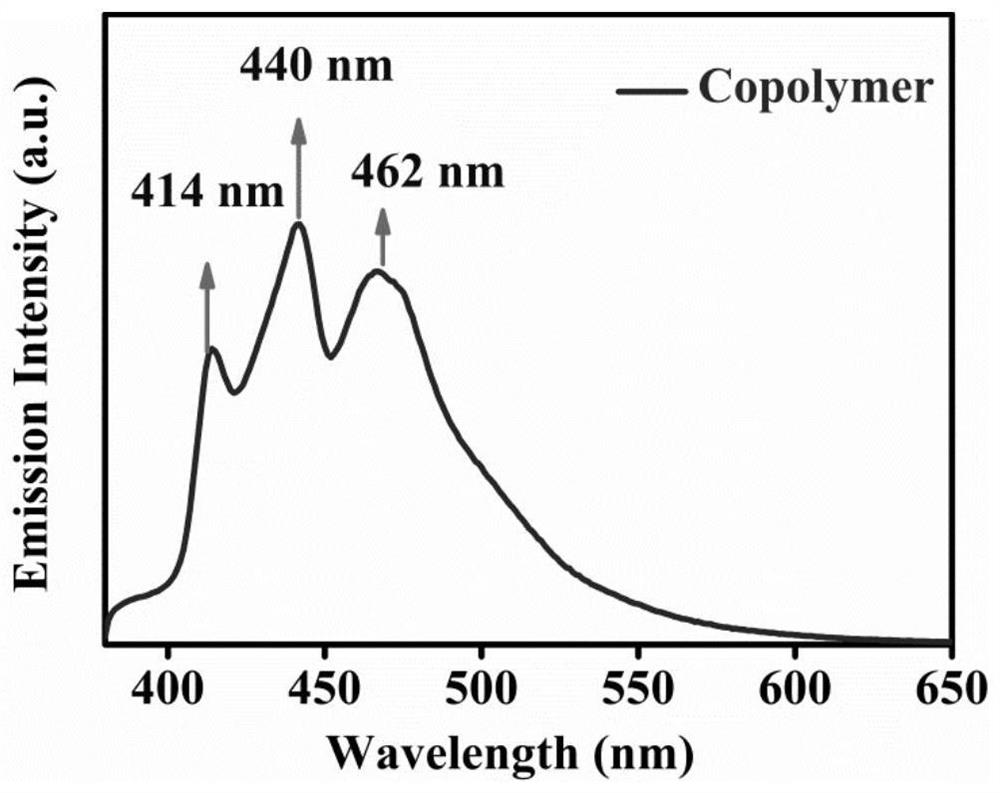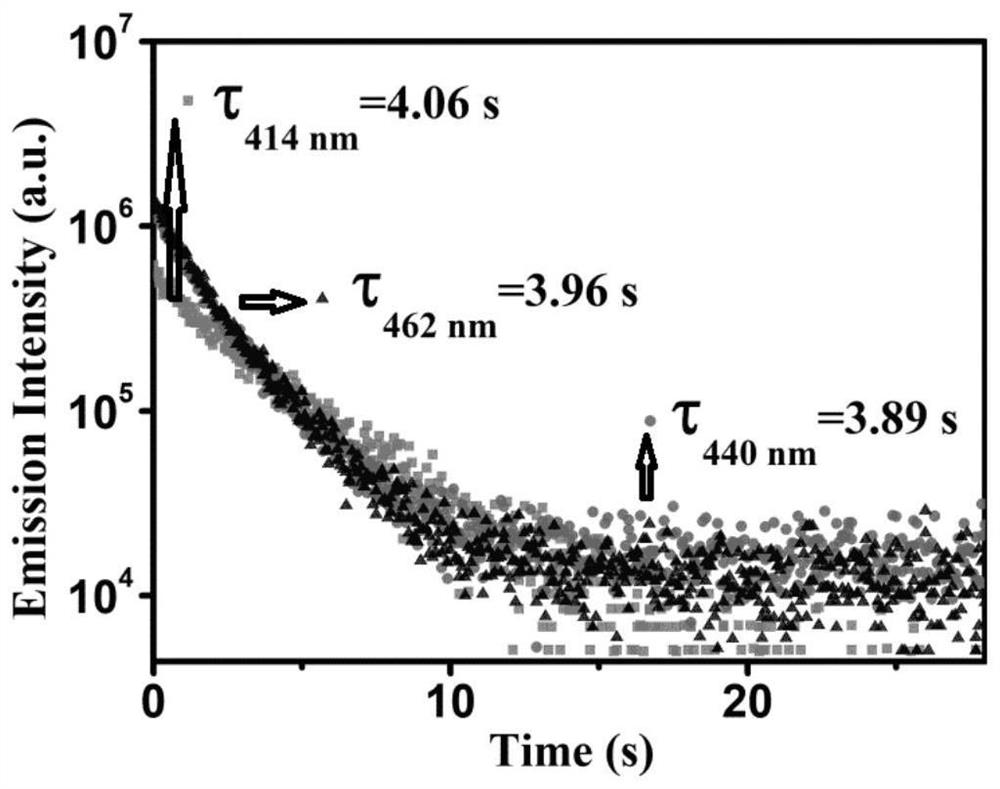Method for synthesizing metal-free heavy-atom-free long-life room-temperature phosphorescent polymer through microwave radiation
A room temperature phosphorescence, microwave radiation technology, applied in chemical instruments and methods, luminescent materials, etc., can solve the problems of increasing material cost, toxicity, enhancement, etc., and achieve the effects of low price, strong phosphorescence emission, and easy availability of raw materials
- Summary
- Abstract
- Description
- Claims
- Application Information
AI Technical Summary
Problems solved by technology
Method used
Image
Examples
Embodiment 1
[0020] Dissolve 50 mg (0.26 mmol) of vinyl carbazole and 1.38 g (19.5 mmol) of acrylamide in 23 g of water in a round bottom flask, then add 0.014 g of ammonium persulfate, mix well and place in a WBFY201 microwave reactor ( 2450 ± 50 MHz microwave frequency) and connected to a straight condenser, reflux the copolymerization reaction at 520 W microwave output power for 4 min, after cooling to room temperature, drop the reaction solution into methanol to precipitate, filter, wash the filter with methanol The cake was dried three times in a vacuum oven at 70°C to obtain a metal-free, heavy-atom-free, long-lived phosphorescent polymer material at room temperature. The phosphorescent emission peaks are located at 414 nm, 440 nm and 462 nm. figure 1 As shown, the triplet lifetimes are 3.22 s, 3.24 s and 3.21 s, respectively.
[0021] The long-life room temperature phosphorescent polymer prepared in this example emits blue-violet light under the irradiation of a 365 nm ultraviolet l...
Embodiment 2
[0023] Dissolve 50 mg (0.26 mmol) of vinyl carbazole and 460 mg (6.48 mmol) of acrylamide in 8.5 g of water in a round bottom flask, then add 0.005 g of ammonium persulfate, mix well and place in a WBFY201 microwave reactor ( 2450 ± 50MHz microwave frequency) and connected to a straight condenser, reflux copolymerization reaction at 520W microwave output power for 3.5 minutes, after cooling to room temperature, drop the reaction liquid into methanol to precipitate, filter, and wash the filter cake with methanol 3 The second time, it was dried in a vacuum drying oven at 80°C to obtain a microwave-assisted synthesis of metal-free, heavy-atom-free, long-lived room temperature phosphorescent polymer. Its phosphorescent emission peaks are located at 414 nm, 440 nm and 462 nm, and the triplet lifetimes are 4.06 s, 3.89 s and 3.96 s, respectively. The lifetime decay diagram is shown in figure 2 .
[0024] The organic room-temperature phosphorescent material prepared in this example...
Embodiment 3
[0026] Dissolve 50 mg (0.26 mmol) of vinyl carbazole and 1.38 g (19.5 mmol) of acrylamide in 22 g of N,N-dimethylformamide in a round bottom flask, then add 0.018 g of ammonium persulfate, and mix well Placed in a WBFY201 microwave reactor (2450 ± 50 MHz microwave frequency) and connected to a straight condenser, reflux copolymerization reaction at 325 W microwave output power for 6 minutes, after cooling to room temperature, drop the reaction liquid into methanol to precipitate , filtered, washed the filter cake with methanol for 3 times, and dried in a vacuum oven at 80°C to obtain a metal-free, heavy-atom-free, long-life room-temperature phosphorescent polymer material, which emits blue-violet light under a 365 nm ultraviolet lamp. After the UV lamp was turned off, the afterglow time reached 2 s.
PUM
 Login to View More
Login to View More Abstract
Description
Claims
Application Information
 Login to View More
Login to View More - R&D
- Intellectual Property
- Life Sciences
- Materials
- Tech Scout
- Unparalleled Data Quality
- Higher Quality Content
- 60% Fewer Hallucinations
Browse by: Latest US Patents, China's latest patents, Technical Efficacy Thesaurus, Application Domain, Technology Topic, Popular Technical Reports.
© 2025 PatSnap. All rights reserved.Legal|Privacy policy|Modern Slavery Act Transparency Statement|Sitemap|About US| Contact US: help@patsnap.com



